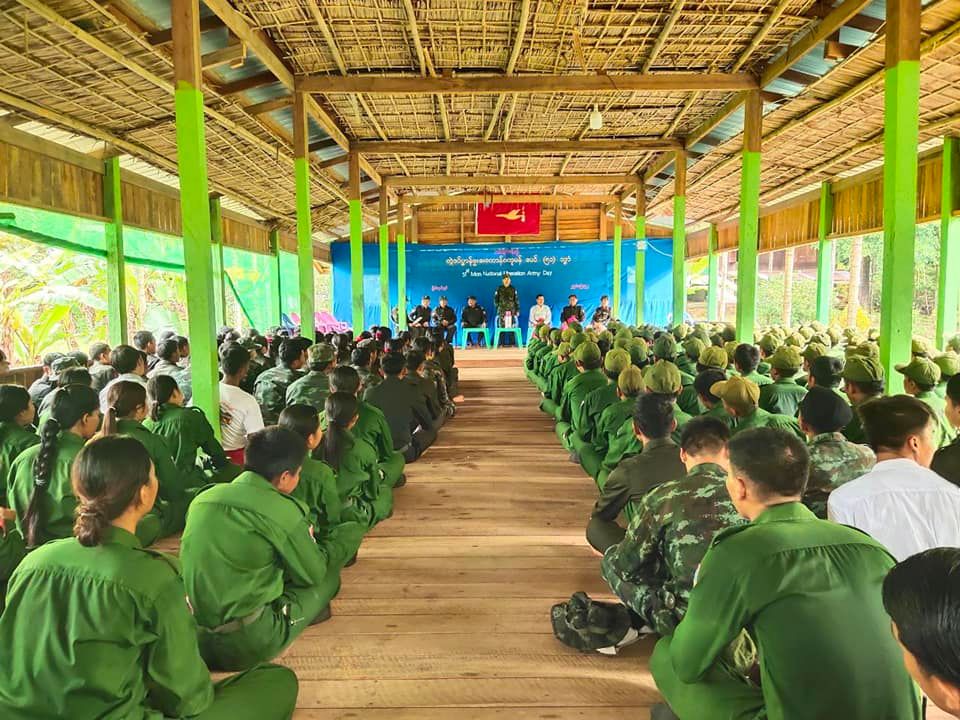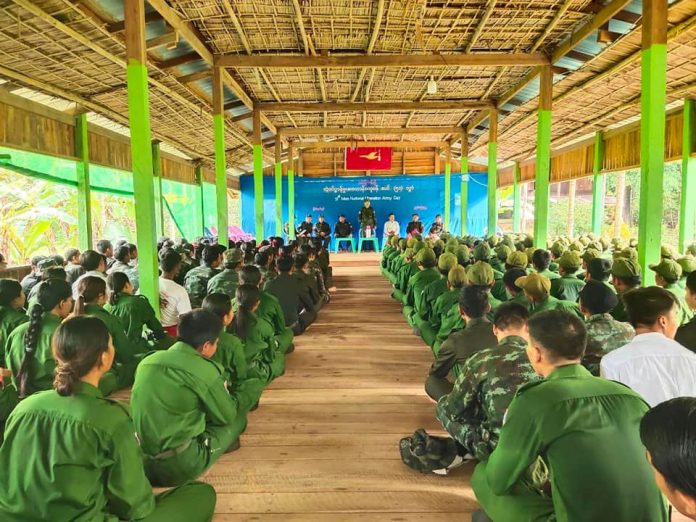
On the occasion of the 51st anniversary of the Mon National Liberation Army (MNLA), the Chair of the New Mon State Party, Nai Hong Sar, reminded attendees that Mon State only emerged after the formation of the MNLA.
The 51st commemoration events were held at the New Mon State Headquarters, in the Districts of Mawlamyine, Dawei and Thatthong. Nai Hong Sar’s commemorative message was read aloud at each event.
“If our National Defense Force is weak, we will be judged by others. Therefore, I want us to focus and make special efforts to strengthen our National Defense Forces,” urged Nai Hong Sar.
After the formation of the Mon National Liberation Army-MNLA on August 29, 1971, and under the leadership of the New Mon State Party (NMSP), the Socialist Republic of the Union of Burma government established Mon State on March 19, 1974.
Even before Mons entered the armed struggle, their leaders’ demands for national rights and statehood were not acknowledged. It was only after the emergence of the armed forces did these entitlements appear, noted Nai Hong Sar.
That period of armed struggle led some Mon people to flee toThailand. Many Burmese from the upper regions of the country saw the opportunity to settle in the region. Nai Hong Sar pointed out this period in history led to the erosion of Mon literature, language, culture, and history. He argued that if the Mon people do not continue to fight, their ethnicity will be at risk of disappearing. ,
Nai Hong Sar’s statement spoke of how some Mon nationals were enslaved, some left for foreign countries, and increasingly youth have become enraptured with drug use. Few people he stated are making efforts to uphold Mon nationalism. Nai Hong Sar warned that if the Mon community does not strive for nationalism then Mon people’s lives will disappear, not unlike the people from Pathein and Hanthawaddy (Pago) regions or the Muttama region where numbers have been cut in half.
When the New Mon State Party (NMSP) was founded in 1958, it was not able to build a strong armed force, but in 1970, the NMSP, the Karen National Union KNU, and the former Prime Minister Oo, Bol Laja, the leader of the Parliamentary Democratic Party PDP 3 parties, formed the Multi-Ethnic Unity and Liberation Army. Later, with the support of some major countries in the world, they were able to equip themselves with modern weapons. Mon youth from various villages, Mon university students, and ex-soldiers from the Mon People’s Front arrived in greater numbers in 1971. By this point in time the number of Mon soldiers reached several thousand and the Mon National Liberation Army was formed with battalions, divisions, platoons, and troops.

